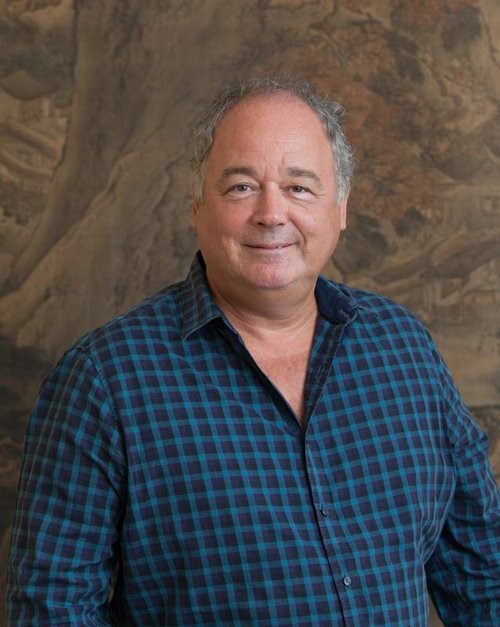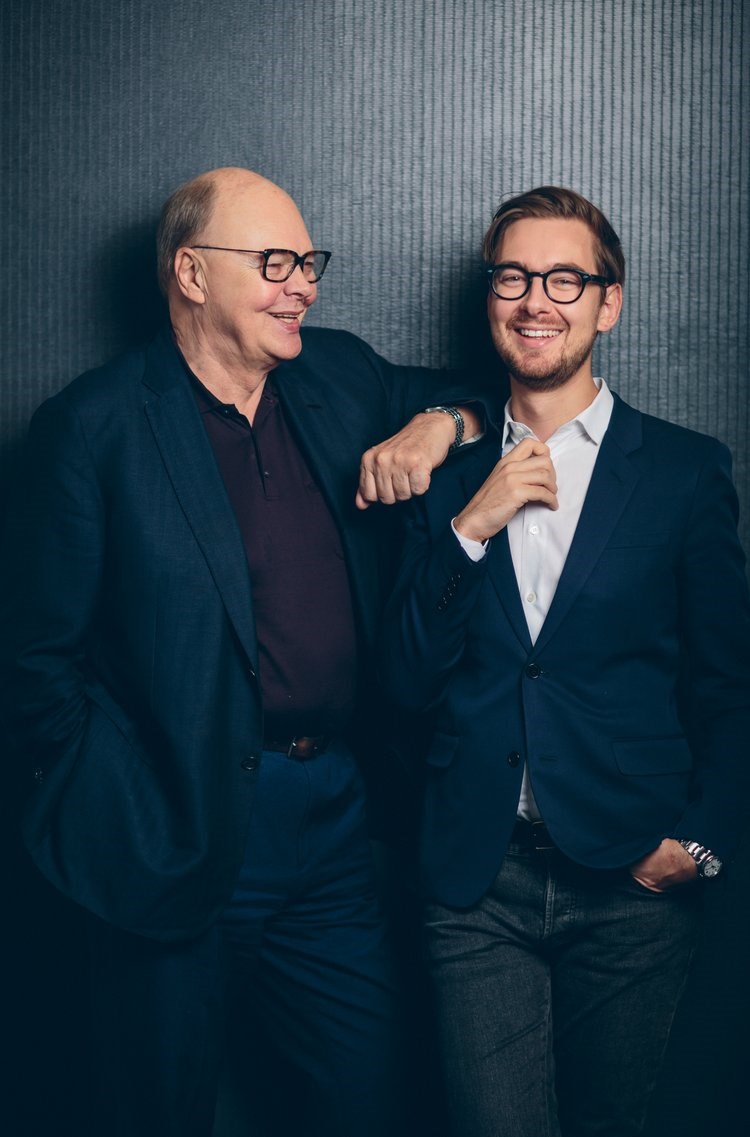Art Dealing Dynasties
09 December 2021
ShareA look at two family-run art businesses in which second and fourth generations are taking over.
Colin Gleadell
Colin Gleadell writes on the art market for The Daily Telegraph, Artnet and Art Market Monitor.
Not long ago, an eminent dealer in Old Masters told me he had advised his son not to follow in his footsteps. Good pictures were harder to find, and the pendulum of taste was not swinging his way. However, the issue of succession has not gone away; it is more omnipresent than ever. And, if you are successful in an expanding business, who better to hand it onto than your children. It’s a moot point though, whether art dealing is in the DNA or whether it’s the allure of easy money in a job for which you don’t have to interview that determines things. So, when the art market is on the up, so are the kids.Over the past decade we have seen several high profile art dealers handing a rein to the next in line – from Pace’s Arne Glimcher, Lisson’s Nicholas Logsdail and David Zwirner, to smaller dealers like Piano Nobile’s Robert Travers and The Open Art Fair 2020 exhibitor Harry Moore Gwyn (both a dealer and an auctioneer like his father). What is clear in all these art dealing dynasties, and going back to Wildenstein, Gimpel and before, is that a lifetime spent in the pursuit of knowledge, wealth and beauty, not be forgotten at the end. That would be such a waste.
In the first of a series on art dealing dynasties, Colin Gleadell talks to two London based families in which second and fourth generations are taking over in the quite distinct areas of historic Chinese and Japanese paintings and works of art, and the latest international contemporary art.
Paul and Oliver Moss

Paul Moss. Courtesy Sydney L. Moss Ltd.
For dynastic longitude, Sydney L. Moss Ltd, London dealers in Chinese and Japanese works of art, is hard to beat. This year is their 111th as the fourth generation of the family settles into its stride. Now aged 70, current clan leader, Paul Moss’ early memories of the family business were rows of dusty shelves full of ceramics. “I hated it,” he says, but he was interested in China, and after a little encouragement from a history teacher who told him going to university was the best way to meet girls, he went to Durham University where he studied Chinese and wrote his dissertation on Tibetan thangkas.
After an extended Indian temple hopping tour and some translation work for his uncle, Hugh Moss, in Hong Kong, Paul took over the family business in 1979, aged 28, after his father, Geoffrey died prematurely. Both Paul’s father and grandfather (Sydney), were pre-eminent in the fields and were presidents of the British Art & Antique Dealers’ Association (BADA). Sydney was a founder of the industry’s flagship event, The Grosvenor House Art & Antiques Fair in 1934.
Although the business had had its ups and downs – “sell the Bentley, travel by bus”, Sydney told Geoffrey after an impulsive purchase at auction – there was a certain amount of family pride at stake when Paul moved into the driving seat. The market for Chinese antiques was beginning to heat up (though nothing like today), and Paul applied his own academic and aesthetic interests to refocus the business away from predictable Chinese ceramics to the literati arts and, significantly, the less expensive arts of Japan, on which he has published numerous books, notably a three-volume tome on the eccentric stag antler carver, Kokusai, in 2016.
That publication coincided with the growing likelihood that the government would ban the trade in antique ivory works of art, a trade which included the Japanese netsuke in which Paul excelled.
In a 2017 interview with the Antiques Trade Gazette, he addressed the dynastic issue with characteristic aplomb saying: “I bestride my indulgences like a colossus; art dealers are a one-man show.” But he knew he would have to make room for the next generation before long. Two years later, as the anti-ivory legislation date began to close in, he announced that he would take a back seat and that his son, Oliver, then 34, would take control of the business.

Oliver Moss. Courtesy Sydney L. Moss Ltd.
In one sense, the transfer was timely because Paul’s aversion to Instagram might not have helped him cope with the pandemic lockdown situation. Oliver, on the other hand, had been good at maths at school, understood technology and had been thinking in terms of business management – which, as luck would have it, is just what Paul, more focussed on scholarly research, was going to need.
Oli’s training was, as he puts it, ‘unusual’, building on his father’s old fashioned card index system which recorded ‘painters, collectors and hangers on’. But with the advance in technology, which his father had not mastered, he developed a new outreach system, bombarding clients with regular e-blasts detailing 10 objects at a time.
In spite of Paul’s colossus complex, the pair work well together. The only area of disagreement in our conversation came when discussing art fairs. Having distanced himself from the fair circuit early on, Paul agreed to apply for TEFAF, Maastricht in 2015, and he and Oli quickly became part of the furniture there. Then “what about doing Masterpiece, or TEFAF New York?” chimes Oli. “Be careful,” says dad, questioning the timing and emphasising how many good American clients they already have...but then backs down. “I’m only a shareholder, a consultant,” he says. “Oli makes all the decisions...”
Nicholas and Alex Logsdail
Nicholas Logsdail the founder of Lisson, London’s leading gallery for international contemporary art over 50 years ago, was the first member of his family to become an art dealer but will not be the last. He had a Victorian forebear who was a painter (William), and he was taught to paint at a young age by the English fauvist, Sir Matthew Smith. He was also inspired to look at art by his uncle, author and collector Roald Dahl....but no one taught him how to sell art. “I don’t think it’s necessarily in the DNA”, says Logsdail, 76.

Nicholas and Alex Logsdail. Courtesy Lisson Gallery, photo by Roberto Chamorro.
His father, a stockbroker, discouraged him because ‘the art world was full of shady characters’, he says. Perhaps that is why he may prefer the term ‘gallerist’ to ‘dealer’ as he does not buy and sell but promotes new work by living artists.
Logsdail never really set out to be a dealer; he was an artist. He kind of fell into it as a student at the Slade after he found lodgings in a disused house in Marylebone where he could show his own art and that of his friends. By the mid to late 80s Lisson was home to the most talked about artists in Britain – Richard Long, Bill Woodrow, Tony Cragg and Richard Deacon, winning one Turner prize after another. In addition, it introduced the latest American minimalist art by Donald Judd and Sol Lewitt to British collectors like Charles Saatchi. Now it has grown into a $100 million a year powerhouse representing such major international artists as Anish Kapoor and Ai Weiwei with branches in New York and Shanghai as well as London.
Whilst building this empire, it was only natural that Logsdail should want his children to be part of it. Of his four children, his daughter, Kitty, is a chef, and eldest son, Rory, a painter who does his own thing, entirely separate from the gallery. The next son, Alex, studied music developing a penchant for German electronic bands and punk. Jobs in the gallery kept him going while he pursued his music career, until he realised how minimal the chances of success were.
Joining his father’s business was not a foregone conclusion, he says. The first shift came in c. 2005 when he met the editor of Art Forum magazine who offered him an internship in New York. Leaving home for the Big Apple, there followed four years of doing various art world gigs and having the time of his life. “It was wild, crazy and energetic” he recalls “often staying up til 4am...”.
At one point his father took him to an exhibition in Los Angeles with Anish Kapoor. Succession talk was not on the menu. But Kapoor brought the subject up and told Alex that if he was going to run a gallery, he ‘would have to be better than your dad.’ “That was scary,” says Alex.
“But the real turning point was in 2009 when I got ill in New York and was faced with a $25,000 medical bill. I had to come home to London and work it off at the gallery.” Before he knew where he was, he had become completely immersed in the business and was appointed associate director. Wanting to make his own way, he returned to New York and searched for a gallery space. By 2012, Lisson New York was born under Alex’s directorship.
“We did not agree on everything” he says, “but I introduced a number of new artists to the Lisson programme”, like the now hugely successful African American, Stanley Whitney. Nicholas was not prescriptive but told his son the most important thing was to be original.
“I used to think I was always up to date with the contemporary art world”, says Logsdail, “but not anymore. Now I have to ask Alex things and he tells me things I don’t know about.”
At least as Nicholas Logsdail embarks on his third quarter of a century, he’s got the issue of succession sorted, with yet another son waiting in the wings. “I’m a lucky ducky”, he muses contentedly.
To be continued....

